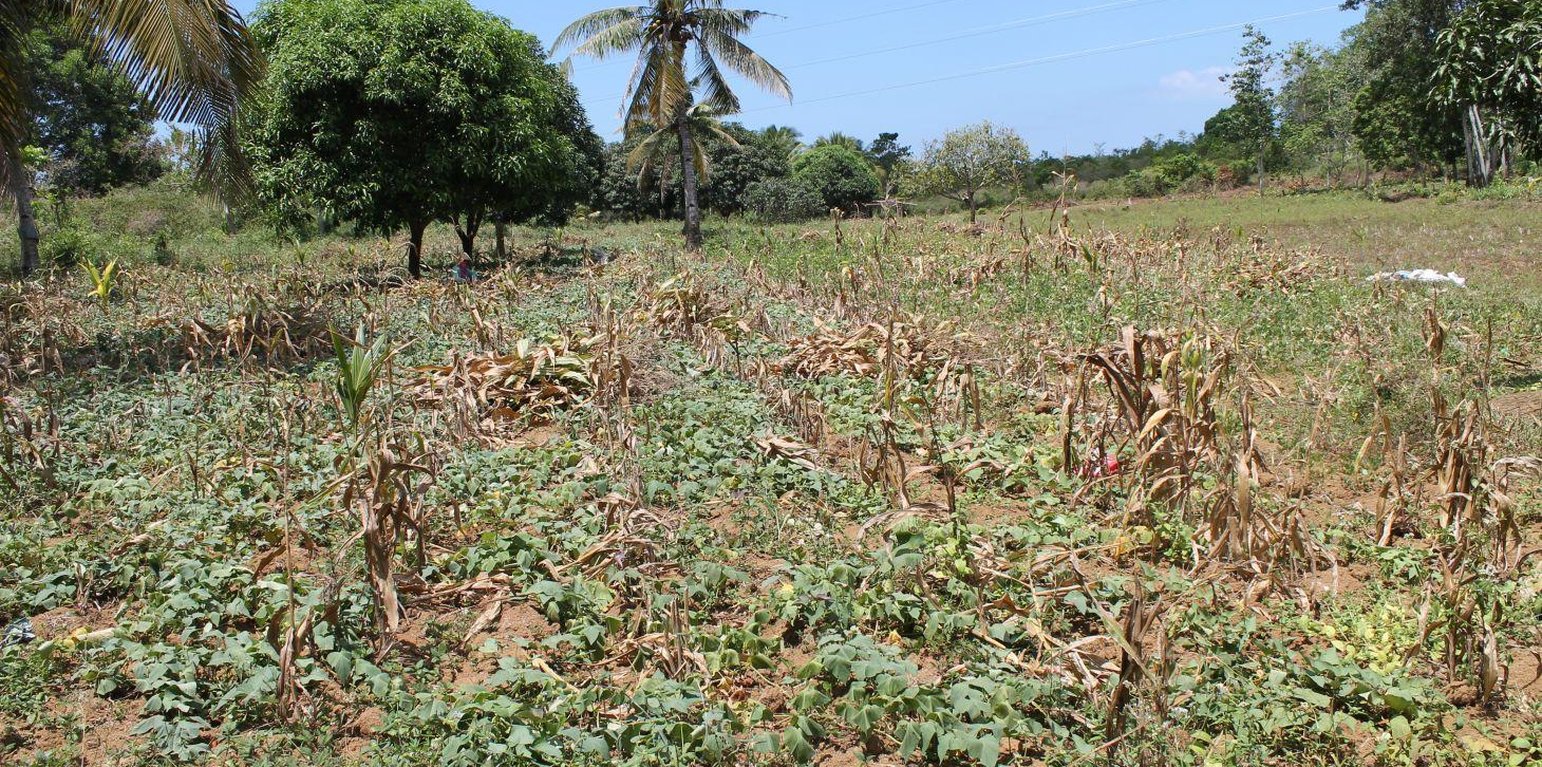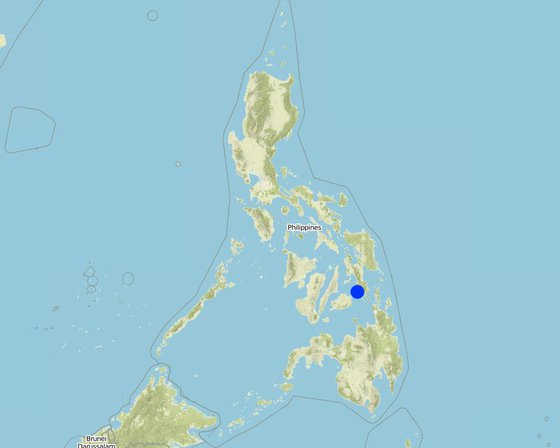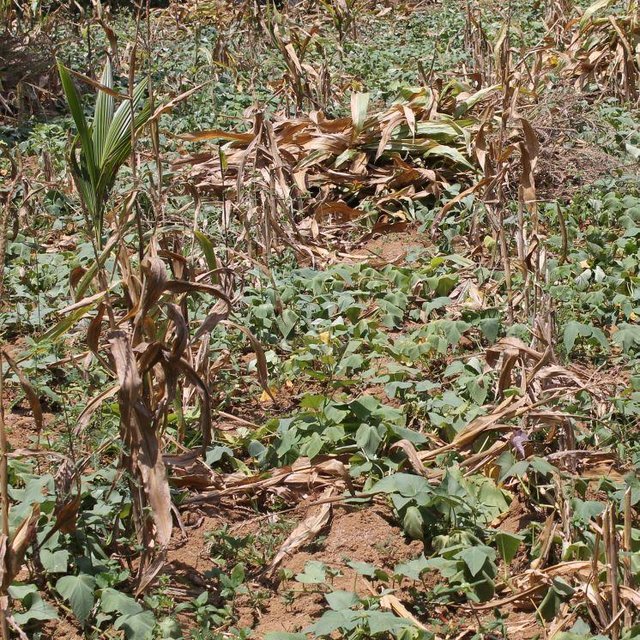



It is the planting of sweet potato together with rice/corn on the same area, hence, maximizing the area for crop production. Specifically, a local sweet potato variety called “mayaman” is planted one to two months after planting rice/corn and is being cultivated in the field in between the rows of the above-mentioned main crop. The “mayaman” variety is selected by the farmers due to its excellent food quality and ability to produce more roots at its vine, enabling staggered harvesting and extending period of utilization. However, in some instances, rice and corn were planted at the same time.
Purpose of the Technology: The main purpose of using creeping type of sweet potato is to provide cover to the soil which addresses soil moisture conservation primarily during growing period and after main crop harvesting time. It also protects the soil against erosion. Moreover, it provides additional and alternative food source for the farmers, in case the main crop fails due to some reasons.
Establishment / maintenance activities and inputs: The main crop, either corn or rice, is planted first with a specified planting distance--75cm between rows and 75cm between hills with 2 to 3 seeds per hill (for corn) and 30cm between rows and 20cm between hills with 5 to 6 seeds per hill (for rice). After one month, the sweet potato cuttings are planted in between rows of the main crop at a distance of 1.5m between hills.
Natural / human environment: This relay cropping system is locally known as “lapat” in the areas of Matalom and Bato, Southern Leyte where it is commonly practiced.The soil in these areas is characterized as mostly acid soil. Whereas, its topography is generally comprises from rolling to steep hills. In terms of climate, rainfall is more or less evenly distributed throughout the year and typhoons usually occur during the months of October or November. In addition, most of local farmers cultivated 1 to 2 parcels with farm size from 0.12 to 5.95 hectares with farming as the principal source of livelihood and income. The fields ot the farms are basically rainfed because it is totally dependent on rainfall as water supply for irrigation.

Location: Matalom, Southern Leyte, Philippines
No. of Technology sites analysed:
Spread of the Technology: evenly spread over an area (approx. < 0.1 km2 (10 ha))
In a permanently protected area?:
Date of implementation: more than 50 years ago (traditional)
Type of introduction






| Specify input | Unit | Quantity | Costs per Unit (n.a.) | Total costs per input (n.a.) | % of costs borne by land users |
| Plant material | |||||
| Corn seeds | kg | 2.0 | 0.78 | 1.56 | 100.0 |
| Rice seeds | kg | 43.2 | 0.7777777 | 33.6 | 100.0 |
| Sweet potato | cuttings | 13000.0 | 0.00555555 | 72.22 | 100.0 |
| Total costs for establishment of the Technology | 107.38 | ||||
| Total costs for establishment of the Technology in USD | 2.39 | ||||
| Specify input | Unit | Quantity | Costs per Unit (n.a.) | Total costs per input (n.a.) | % of costs borne by land users |
| Labour | |||||
| Labour | ha | 1.0 | 391.5 | 391.5 | 100.0 |
| Total costs for maintenance of the Technology | 391.5 | ||||
| Total costs for maintenance of the Technology in USD | 8.7 | ||||
less weeding needed since sweet potato served also as cover crop